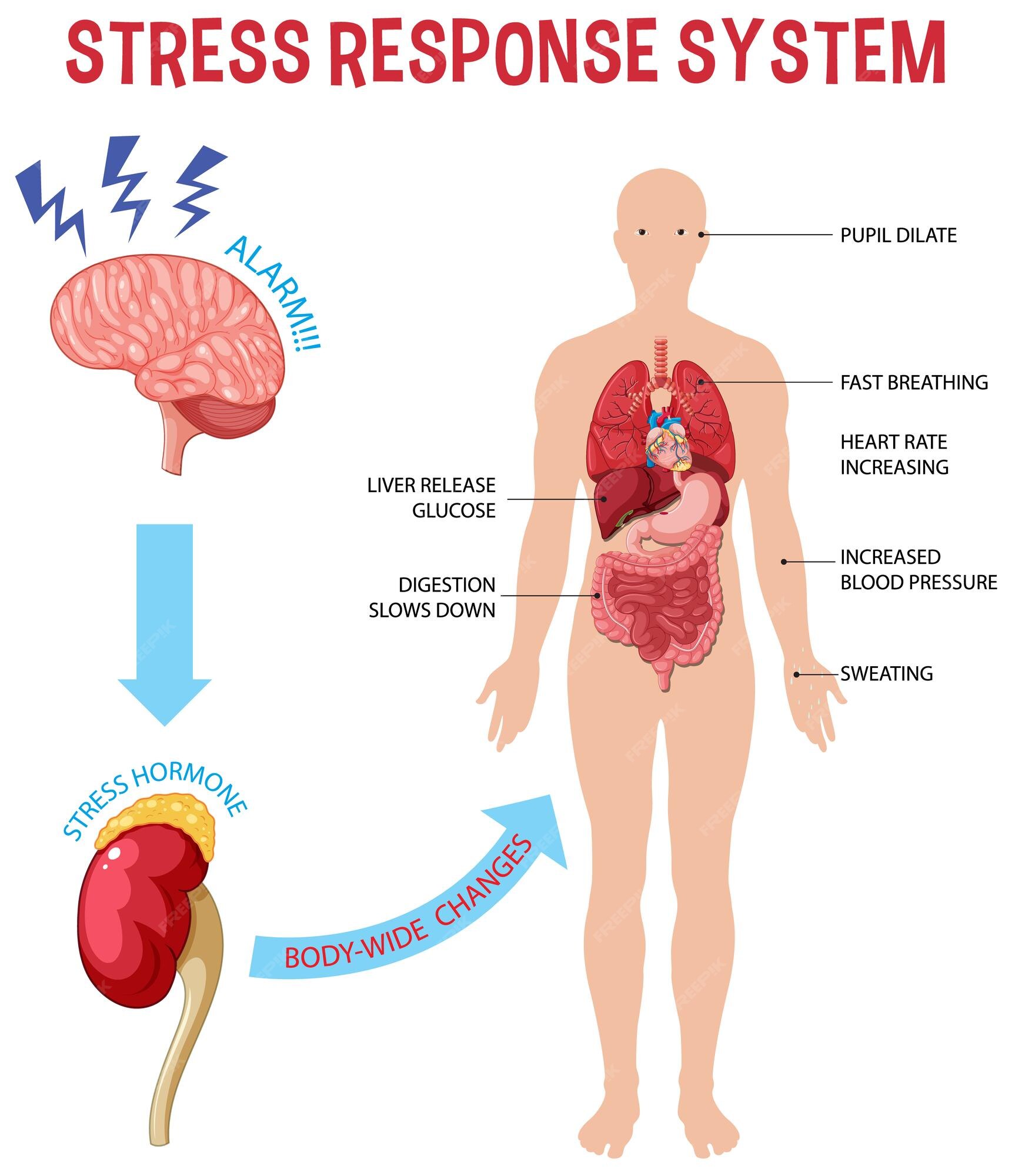
The human body has an amazing physiological reaction time when it perceives danger. This is the result of the limbic system, which consists of multiple components that work together to process emotion, stimulus, and memory. The amygdala, hippocampus, thalamus, and hypothalamus are the components of the limbic system most associated with the fight or flight response. All these terms can get kind of complicated, but I'll try and simplify it a bit.
For example, you see a wolf right outside your tent while you are camping. The moment your eyes see it, your thalamus processes this visual stimulus and sends it to your amygdala, activating it. When activated, the amygdala sends a signal to the hypothalamus, the "command center" of the response. This signal is sent through a band of fibers connecting the amygdala and the hypothalamus, called the stria terminalis and the ventral amygdalofugal pathways. Now that the hypothalamus is in control, it sends signals through autonomic nerves to adrenal glands and communicates to the rest of the body using the autonomic nervous system. This is a part of the nervous system that controls the unconscious functions necessary for survival. It consists of the nerve network that runs throughout the whole body. The use of adrenal glands is to secrete steroid hormones such as epinephrine (adrenaline) and cortisol into the blood. The epinephrine is the signaling molecule, and after binding, the alpha G-protein exchanges a GDP molecule with a GTP molecule. This exchange starts the dissociation of the alpha G-protein from the receptor, making it active. Then, the activated alpha G-protein binds to adenylate cyclase, leading to the conversion of ATP molecules into cAMP molecules. The generated cAMP molecules then activate protein kinase, which stimulates various enzymes and molecules involved in numerous cellular processes. These hormones are why you notice the physical changes in your body as it is going through this stress response.

Your specific response will depend on how you tend to respond to panic or stress, but you can usually bank on these few things to happen: increased heart rate, quick breathing, excessive sweating, and dilated pupils. I mentioned that responses may vary for different people, because with a "freeze" response, you may find some differences. For instance, your heart rate may decrease instead of increase, and you might find yourself holding your breath instead of quickening it. The person who froze is very alert, but they feel like they can't move. The use of this is it can help someone hide, because without movement many predators would lose interest. Freezing is also associated with a higher perception of one’s surroundings, which helps process information. The purpose of these responses is to prepare your body to fight, flee, or freeze in a dangerous situation. These responses get your body ready to act under high pressure and make you quickly assess whether fight, flight, or freeze is the best course of action. The responses don't always have to relate to immediate survival either. People often perceive things as danger that really have nothing to do with survival. The perception and response to risks can be shaped by various factors. Personal values, beliefs, and attitudes, along with broader social or cultural values or tendencies, significantly impact the way risks are perceived and embraced by individuals. Continued activation of the stress response system over an extended period, coupled with excessive exposure to cortisol and other stress hormones, can disrupt virtually all physiological processes within the body. When cortisol levels remain excessively high for prolonged periods, its beneficial role in reducing inflammation can have reverse effects. The elevated levels of cortisol may inadvertently suppress the immune system, making individuals more vulnerable to colds and contagious diseases. This increases the risk of developing cancer, autoimmune diseases, and food allergies. It also causes you to be at a higher risk of anxiety.

You might have noticed that I missed one of the components I originally listed in the limbic system, the hippocampus. This is because the hippocampus is a little different than the others, and isn't directly involved with the same response system as them. The hippocampus is very important for memory formation and learning. It links the fear response to an event in your memory, so for instance, now that you've had that stressful experience with the wolf, your hippocampus will remember it and link wolves with fear. You most likely will not return to that camping spot, because your brain now associates it with danger. This is why the hippocampus is one of the few parts of the brain that continues neurogenesis (the formation of new neurons) into adulthood. You're constantly experiencing new things and creating links between experiences and emotions.
 |
| A lion chases a water buffalo |
No comments:
Post a Comment